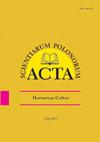生物防治剂在杂草管理中的作用——最新进展和趋势
IF 0.7
4区 农林科学
Q4 HORTICULTURE
引用次数: 0
摘要
在综合害虫管理计划中,对有害植物的生物控制具有显著的能力,可以提供可行、有效和经济的杂草控制。当使用生物除草剂时,作物产量和质量都会提高,几乎不会对生态系统造成损害。生物除草剂是针对特定目标的,只会摧毁经过喷洒的选定杂草,不会对非目标植物造成伤害。生物除草剂可以很快纳入杂草控制计划,从而减少对化学除草剂的依赖。我们还增加了杀虫剂污染环境的可能性。尽管这项工作早在20世纪40年代就开始了,但在商业基地上只有少数几种生物除草剂可用。商业化生物除草剂的来源包括棕榈疫霉(Devine)、球孢Collectrichum gleosprioides(Collego)、球孢子Colletotrichum gloeosporioides(Binnomial)和绿色致变色链霉菌(Bialaphos和Glufosinate)。病原体的毒力及其对环境的要求是生物除草剂开发的主要制约因素。特定的生物除草剂应该有助于在灌溉田地、野生动物中找到位置,同时使杂草与害虫共存或控制杂草的抗性。本文章由计算机程序翻译,如有差异,请以英文原文为准。
Role of biocontrol agents in weed management – recent developments and trends
Within integrated pest management programs, biological control of unwanted plants has remarkable capacity to provide viable, effective, and economic control of weeds. When using bio-herbicides, crop production and quality improve with virtually no damage to the ecosystem. Bioherbicides are target-specific, destroy only selected weeds that have been sprayed for and do not cause harm to non-target plants. Bio-herbicides can be quickly incorporated into weed control programs, which can reduce chemical herbicide dependence. We are also raising the chance of environmental pollution by pesticides. There are only a few bio-herbicides available on commercial bases although work began earlier in the 1940s. Sources of commercialized bioherbicides include Phytophthora palmivora (Devine), Collectotrichum gleosporiodes (Collego), Colletotrichum gloeosporioides (Binomial) and Streptomyces viridochromogenes (Bialaphos and Glufosinate). Virulence for pathogens and their environmental requirement are major constraints for bioherbicide development. Specific bio-herbicides should be useful in finding position in irrigated fields, wildlife while thriving weeds with pests or resistant weed control.
求助全文
通过发布文献求助,成功后即可免费获取论文全文。
去求助
来源期刊
CiteScore
1.30
自引率
14.30%
发文量
61
审稿时长
4-8 weeks
期刊介绍:
In Acta Scientiarum Polonorum Hortorum Cultus we publish original research papers and review articles containing new and significant information on broad aspects of horticulture and related disciplines. The papers are published in English only, in six issues yearly.

 求助内容:
求助内容: 应助结果提醒方式:
应助结果提醒方式:


